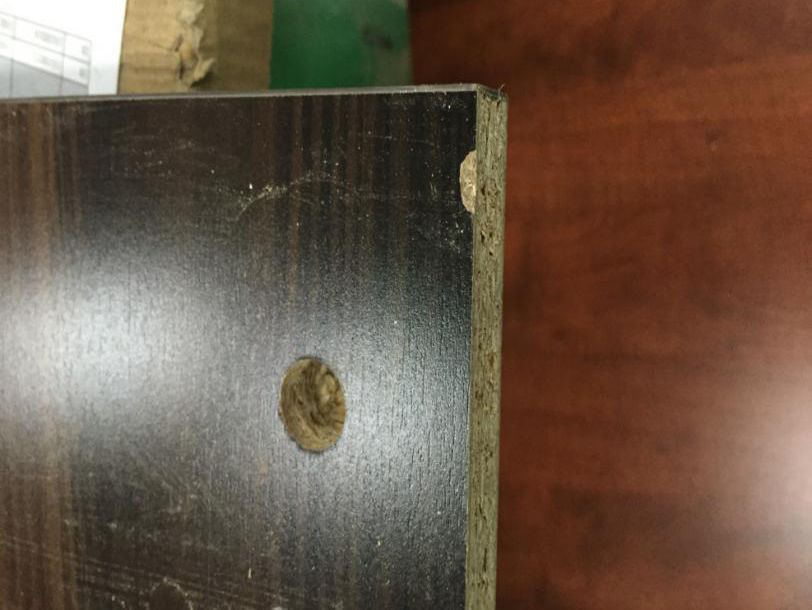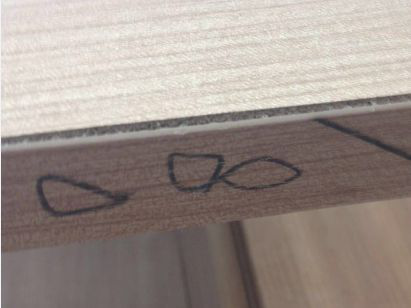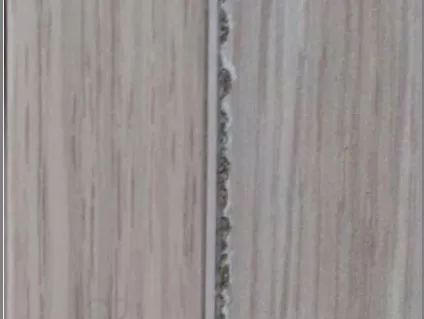The quality of furniture edge banding is determined by the following parts: edge banding machine, hot melt adhesive, edge banding strip, and edge banding operation. In the previous article, we introduced the problems that hot melt adhesive is prone to in the edge banding process and some matters that should be paid attention to. Today, the editor will discuss the impact of edge banding machine and edge banding operation on the quality of furniture edge banding.
01. Collision
If the sawing unit of the edge banding machine hits the board, you should check whether there is a step on the cutting board and whether the cutter is normal: if the cutter is not normal, you need to check whether the air pressure is stable; if the cutter is normal, turn the board over before processing.

02. Scraper
When the height of the plate does not match the height of the pressure beam set by the edge banding machine, the edge banding is prone to scraper phenomenon.
When the scraper problem occurs, first check whether the plate is swollen, and then check whether the scraper unit is working properly. If the plate and processing components are in normal condition, check whether there are rubber blocks attached to the slider and pressure wheel, and clean them in time. If there are no problems, check whether the tool (scraper and flat blade) is loose and whether the tool position is adjusted in place.

03. Uneven ends
The reason for uneven ends may be that the broken edge banding strip is long, causing gaps and glue in the edge banding strip along the grain, or the sawing unit is unstable and causes bad cutting, unevenness, protrusion, etc.
For the phenomenon of uneven ends, first confirm whether the problem occurs in the front saw or the back saw, whether it is cutting the board or the edge strip has a large margin. After finding the cause, make corresponding adjustments to the sawing unit.
04. Corner drop
When the corner drop problem occurs, first check whether the original board has corner drop. If the original board has no problem, check the processing process to determine the location of the corner drop problem. Generally, the tracking unit and the scraper unit are prone to corner drop: it may be that the board is uneven or the tracking knife hits the edge strip.

05. Poor edge banding
There are two main reasons for poor edge banding. One is poor glue supply, which causes the edge strip to not be glued. In this case, you can remove the edge banding of the first panel to check whether there is glue on the panel. The other is that the glue spraying unit sprays glue poorly, causing the edge banding to be glued or not. This situation can be avoided to a great extent by checking the glue spraying port and clearing the blockage before starting the machine.
In addition, sawdust between the edge banding and the panel is also a factor causing poor edge banding.
06. Edge running
The edge banding strips may not match the height of the plate or the edge banding strips may not be pressed tightly, which may lead to edge banding defects. It is necessary to check whether the edge banding strips are matched in size, whether the edge banding pulley is normal, and whether the edge banding strips are stuck.
07. Edge burst
When edge burst occurs on a plate, first check whether the original plate has edge burst problems, and second test whether the milling cutter will cause edge burst.





